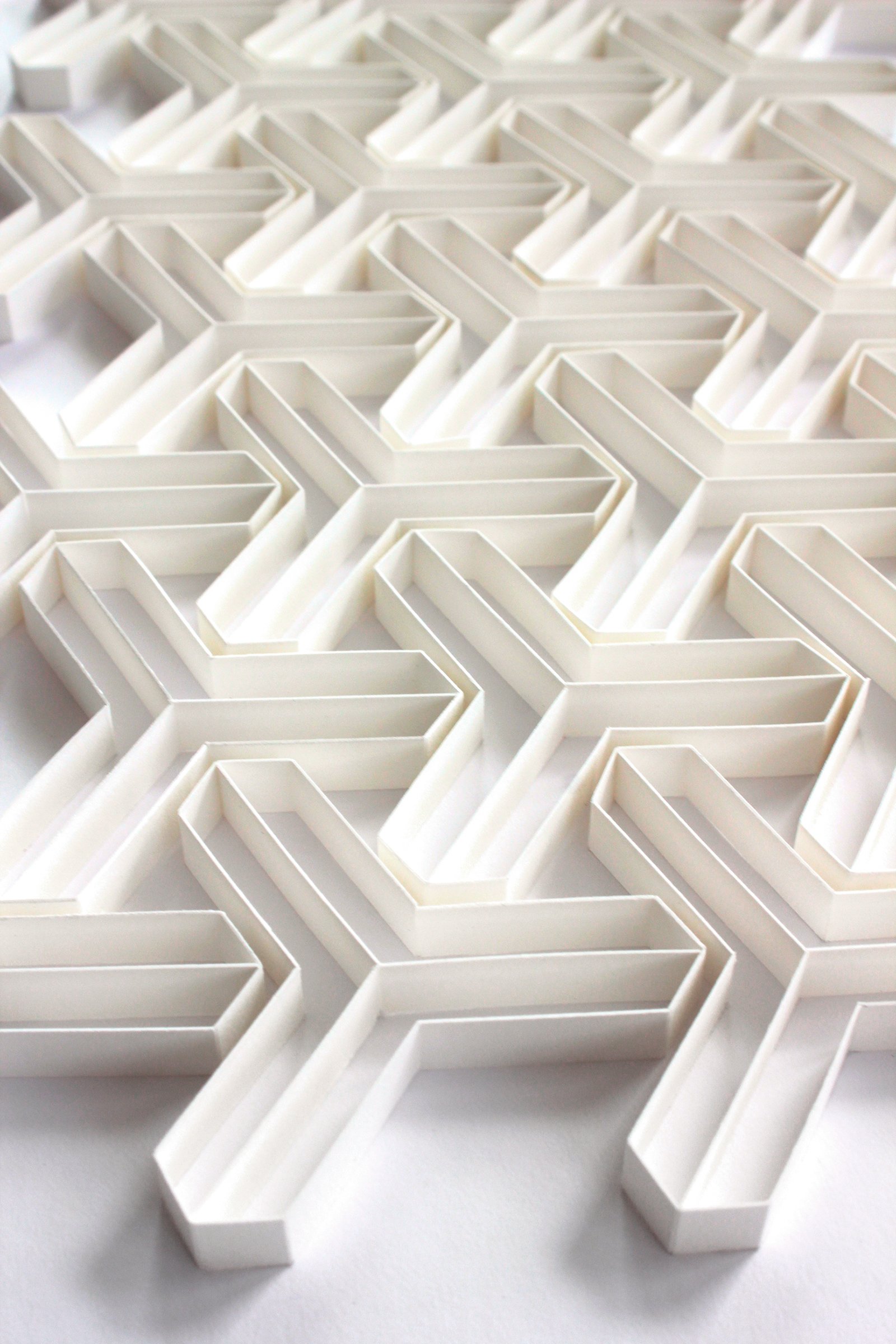Traditional Japanese patterns, known as Wagara, are designs largely inspired by nature and crafted by combining elements from painting and Chinese calligraphy. There are many patterns and each one has a specific meaning that dates back to historical references.
Asanoha is a geometric design depicting hemp leaves, it represents growth and good health.
Kagome is a trihexagonal tiling pattern consisting of equilateral triangles and hexagons. The pattern has long been used in Japanese wickerwork. Kago meaning “basket”, and me, meaning “eye(s)”, referring to the pattern of holes in a woven basket.
Kikkō consists of hexagonal shapes resembling a tortoise-shell, symbolizing longevity.
Variations include Bishamon Kikkō, where 3 hexagons are joined to form a Y-shape. The composition below differs slightly from the norm and has extended branches.
Shippo translates into the seven treasures or jewels of Buddhism. The treasures are represented by the never-ending linked circles, and the infinitely repeating pattern is considered to be an auspicious design.
ASANOHA 69 detail
ASANOHA 69 — On-edge paper on mat board, framed
18.9” x 22” x 1.6” | 480 x 559 x 41 mm
2020 | Private collection. Berkeley, CA
KAGOME 118 detail
KAGOME 118 — On-edge paper on mat board, framed
22.4” x 18.1” x 1.6” | 569 x 460 x 41 mm
2020 | Private collection. Lake Geneva, WI
KIKKŌ 31 detail
KIKKŌ 31 — On-edge paper on mat board, framed
18.9” x 22” x 1.6” | 480 x 559 x 41 mm
2020 | Private collection. Richmond, VA
SHIPPO 120 detail
SHIPPO 120 — On-edge paper on mat board, framed
22.4” x 18.1” x 1.6” | 569 x 460 x 41 mm
2020 | Private collection. Berkeley, CA
BISHAMON KIKKŌ 25 detail
BISHAMON KIKKŌ 25 — On-edge paper on mat board, framed
22.4” x 18.1” x 1.6” | 569 x 460 x 41 mm
2019 | Private collection. Lake Geneva, WI










